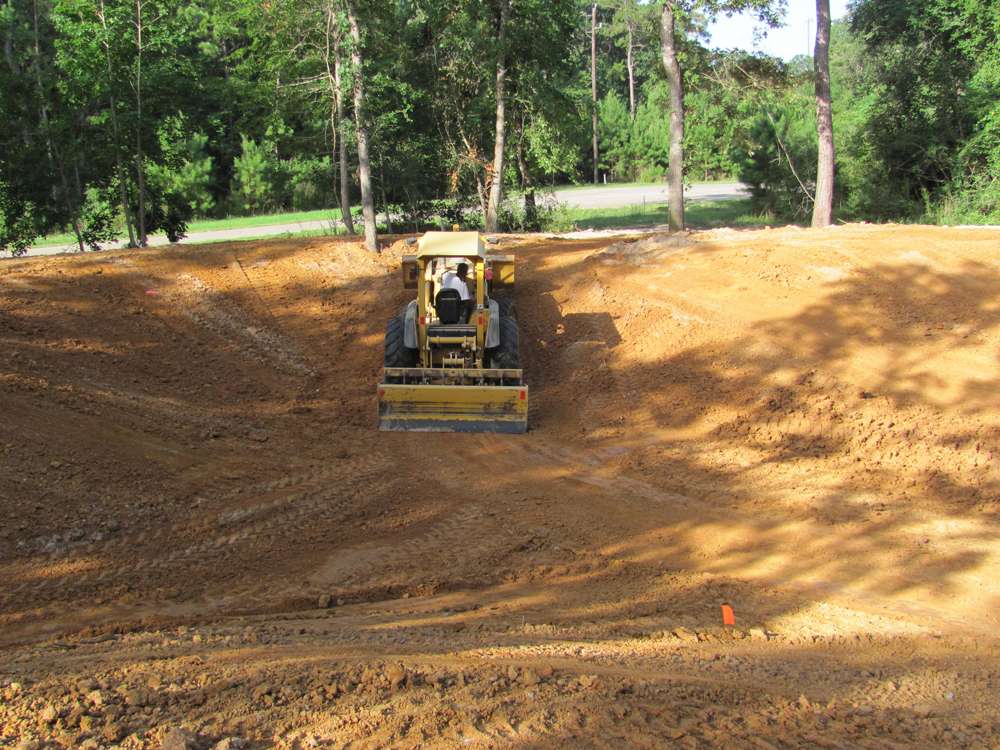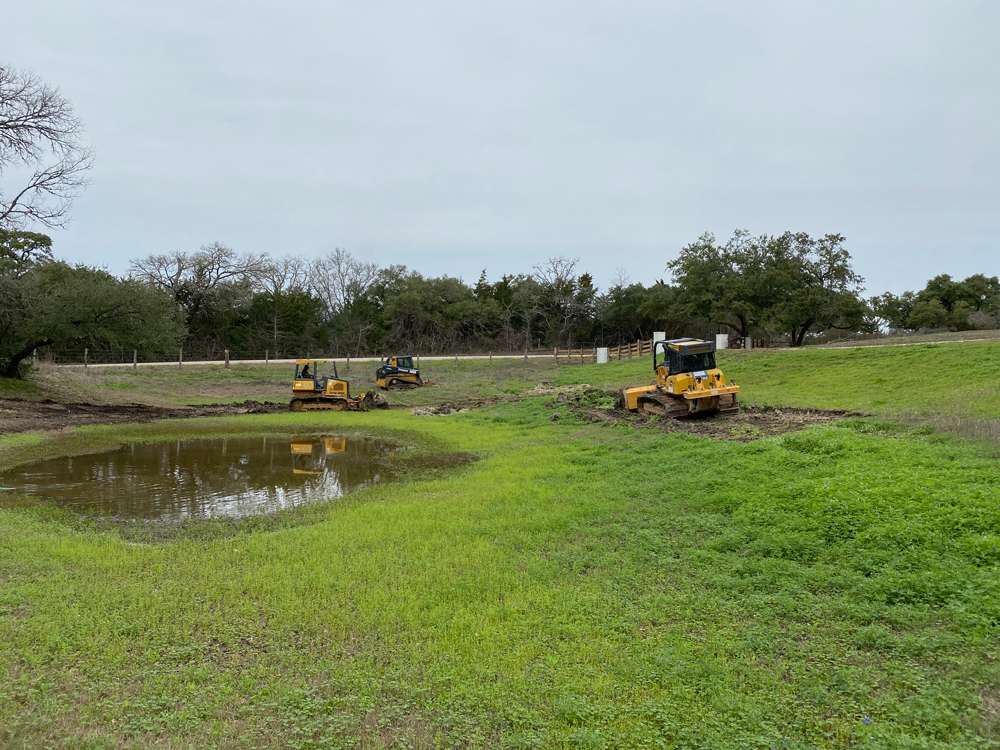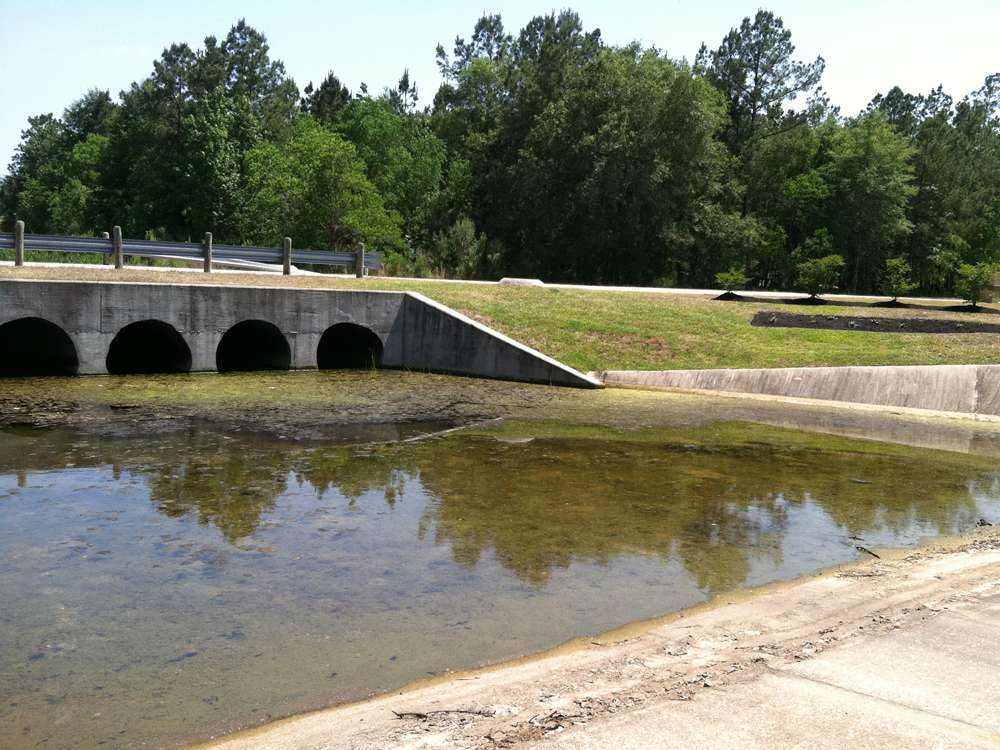Ponds and Lakes
- Home
- Ponds and Lakes
The type of Houston pond you need depends on your goals. Some of our customer’s top reasons include: 1) a low area that holds water and is wet the majority of the year; 2) moving dirt to build your house pad or to fill in low areas on the property; 3) fishing pond installation; 4) swimming hole for you or watering hole for your livestock; 5) enhance the beauty of your property; 6) to attract wild life
Whatever your reason, Daniel Dean knows what it takes to build a pond that holds water.
How much does it cost? To receive your free estimate, click Estimate My Job button:
Pond and Lake Construction

The location of the pond will often determine its size. The most cost-effective site is where you can use the topography to your advantage. Gently sloping land channels runoff surface water towards a pond, brings the water table closer for spring-fed or pumped water, and means there’s less dirt to excavate.
read more
Reducing dirt volume to excavate is especially important if you need to build a low dam, which is significantly more expensive than excavating a basin.
It is important when you build a pond to consider the elevations of the water as it comes onto your property and as it exits from your property. You don’t want to build a pond that backs up water onto your neighbors property. And, where rain run off enters your pond needs to be constructed to minimize erosion.
It is also incredibly important to strip back the topsoil and save it. This needs to be placed back around the pond after construction.
When digging a pond, the area needs to be cleared of trees and stumps and disposed. Ponds don’t have to be dug very deep. A deep pond of 18 feet will accommodate both cold and warm water fish. It allows sunlight 12 feet deep into the pond to promote shallow growing vegetation. This supplies oxygen for aquatic wildlife. Shallow areas can be made into quality wildlife habitats, which also reduces digging expenses. So medium size ponds give you a great area to promote fish populations for recreational purposes. Having the right excavation equipment for pond digging also reduces costs.
Imported clay soil and perhaps other sealants may be needed, unless the pond is excavated from an area of tight clay. So even if your basin is clay, it will may require compacting. A general rule of thumb to determine if your pond will support water is to grab a small handful of the excavated basin soil and roll it into the shape of a pencil. If it bends before breaking, the clay should provide a seal.
And finally, when we are done, grass needs to be established.
Pond Repair

There are a lot of ponds out there that leak and do not hold water. A big rain event might fill it up to the top and then a couple days later you can see the water level just going down and down and down.
read more
Daniel Dean has repaired a lot of leaking ponds, usually because the original constructor of the pond did not take the time to separate the clay material and line the pond properly. Decades ago most ponds were just built with a bulldozer, and it was a lot harder to separate the clay from the sand to get a proper lining. Using an excavator is much easier to separate the materials.
Most of the time to fix a pond Daniel Dean will drain the pond and remove two or three feet of the existing dirt. We then pack good clay material into the pond, effectively lining it everywhere water will be.
Pond De-Silting

Pond silt is dead plant leaves, lawn clippings from mowing and water plants that break down over time. Eventually the pond fills up with dirty water and silt and kills the pond.
It’s a messy job, and not easy to remove silt from a pond, but Daniel Dean has done it many, many times.
Inlet and Outfall

Installing an inlet pipe to capture the water as it flows into the pond helps greatly to reduce erosion. As water flows from a slope into the pond it can carry a lot of dirt and silt flow into the pond.
The same is true when water leaves a pond; it will erode away the dirt. A good outlet keeps the water surface in the pond at its optimum level, and offers some rate at which water flows out of the pond.
